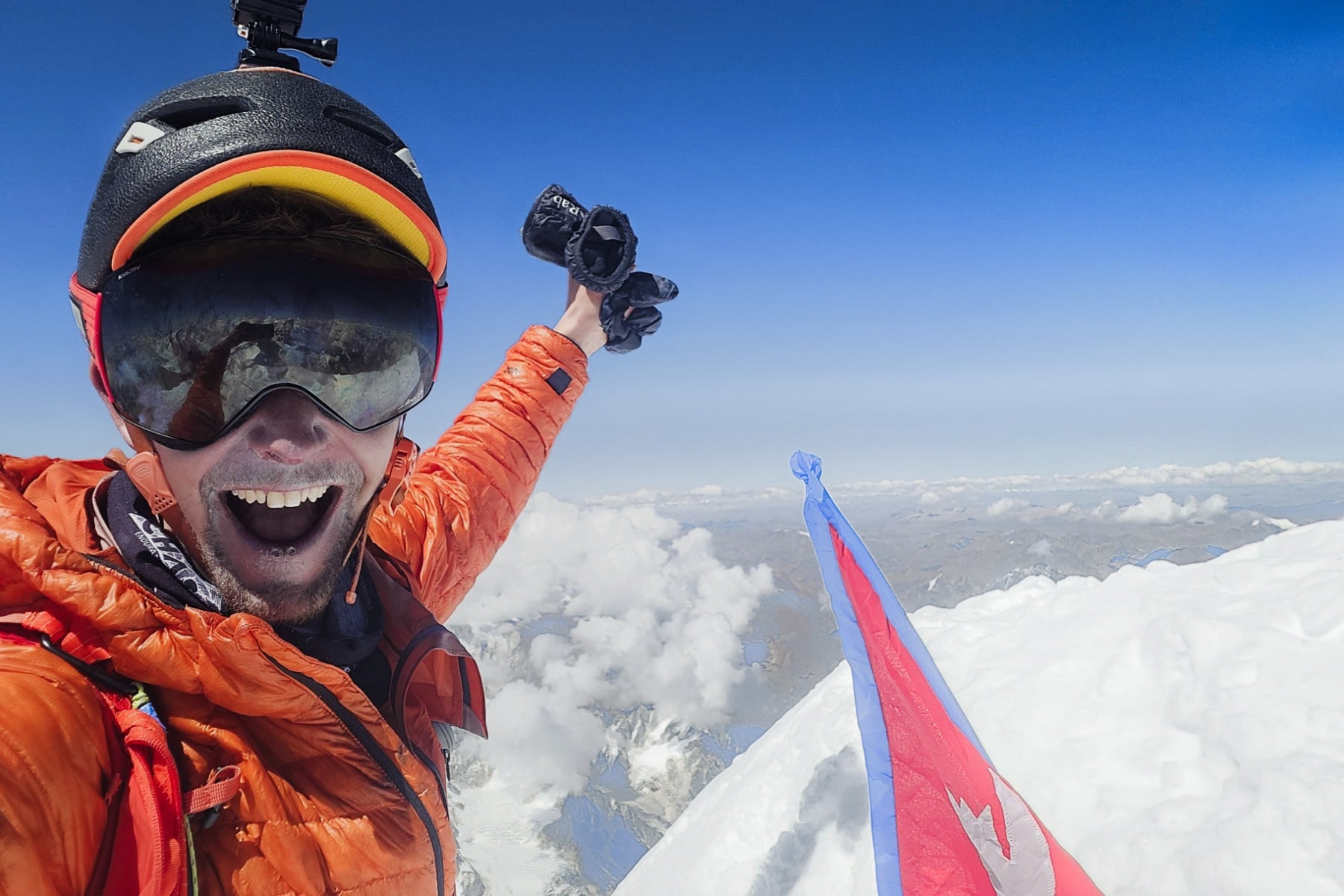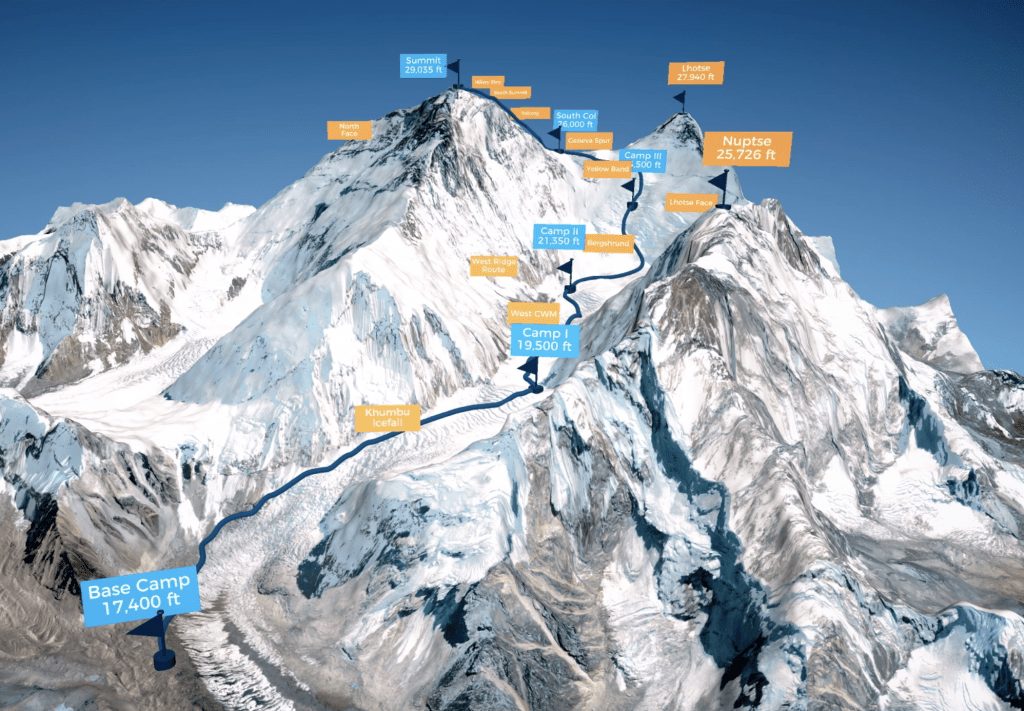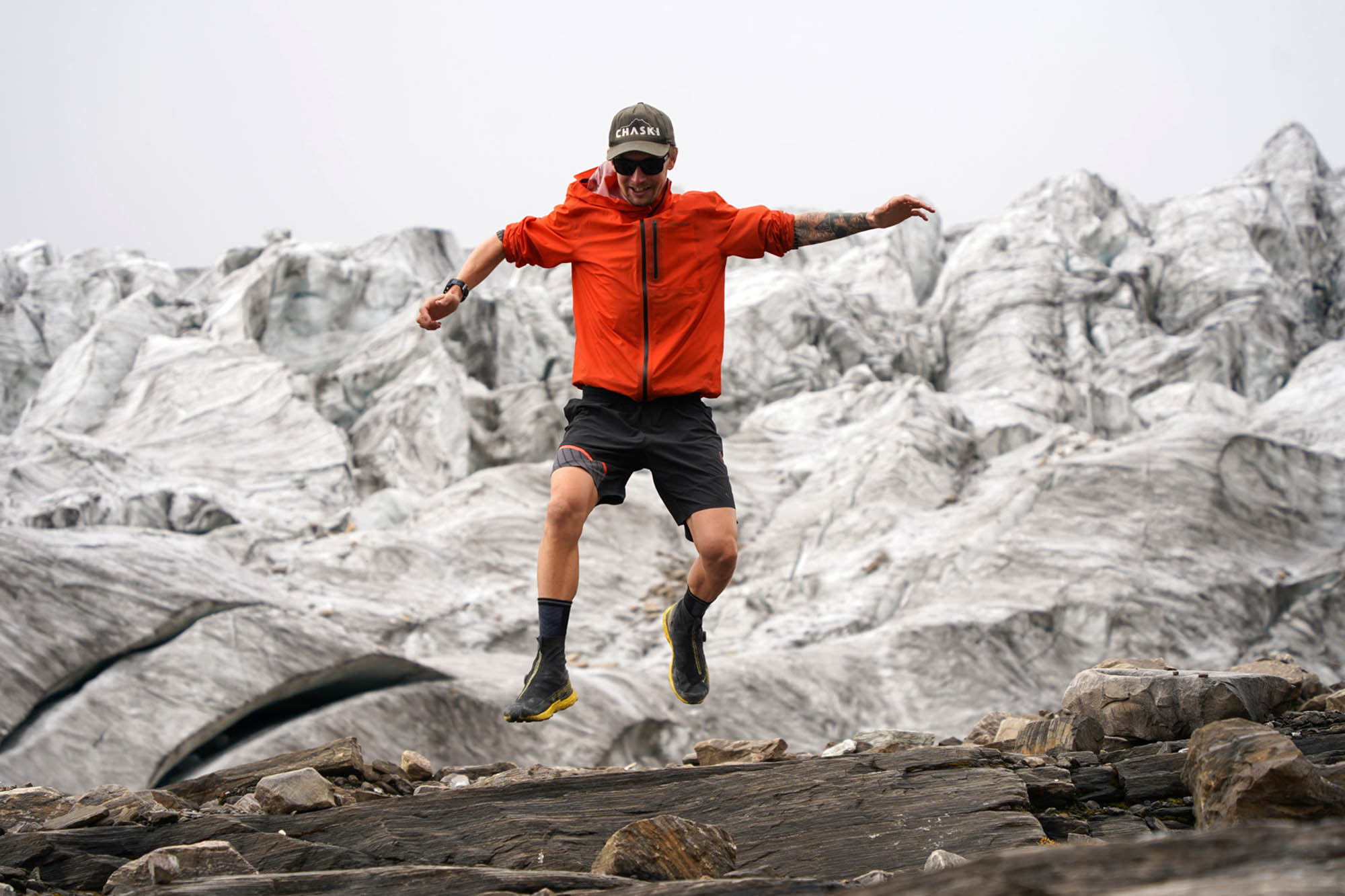
Renowned American ultrarunner Tyler Andrews is setting his sights on the Fastest Known Time (FKT) for ascending Mount Everest without supplemental oxygen this May. The 34-year-old must trek from Base Camp to the peak in less than 20 hours and 24 minutes to beat Kaji Sherpa’s 1998 record.
Andrews has already built an impressive resume of FKTs on Manaslu, Aconcagua, and Kilimanjaro. “[It] is being competitive against myself, and some of it is that I want to be the best in the world. And I’m not embarrassed to say that. I want to go to the most competitive routes, the biggest mountains, the biggest stages, and the highest pressure. That’s exciting for me,” Andrews said in an interview with Outside.
Planned Route
The planned route for his Everest attempt starts from Base Camp, navigating the treacherous Khumbu Icefall, crossing the Western Cwm, ascending the Lhotse Face, and ultimately reaching the 29,032-foot summit via the South Col route. This path presents numerous challenges, including technical climbing sections and the notorious “death zone” above 8,000 meters, where oxygen levels are critically low.
“The last 800 meters could take me four hours or it could take me 12 hours,” Andrews said. The fastest recorded ascent of Everest with supplemental oxygen was completed by Lhakpa Gelu Sherpa in 2003 in a time of 10 hours, 56 minutes, and 46 seconds.
Andrews will make the ascent alone, but he has a support team stationed on the mountain. CEO of Asian Trekking, Dawa Steven Sherpa, has helped Andrews with logistics, and the team will stash food, water, and gear across the mountain since Andrews does not plan to stay overnight at any of the camps.
Close friend and climbing partner Chris Fisher will aid Andrews through the highly dangerous Khumbu Icefall and help pace the ultrarunner in his FKT attempt. Fisher and Andrews have trained together extensively, and Fisher’s experience navigating the region adds another layer of security to the climb.

Modern Mountain Obstacles
Andrews admits that even with his careful planning, the growing numbers on Everest may be a significant barrier to his quick ascent. Congestion on crucial portions like the Hillary Step and the Khumbu Icefall could compel him to slow down or wait for passage, as groups of climbers and guided groups are trying to reach the summit during the same brief weather window in May.
Andrews intends to intentionally time his ascension to minimize delays, departing between climbing companies to minimize choke points.
Packing Light
Andrews’ FKT strategy uses minimum equipment and packing lighter than most others would.
“I think a lot of people have this idea that, ‘Oh, because you’re going in minimal gear, it’s really dangerous.’ I actually think the way that I’m moving on the mountain is safer than the average person,” Andrews said in an interview with iRunFar.
“Let me explain: I spend so much less time in dangerous places. Whether it’s above 8,000 meters, whether it’s below giant seracs, or on avalanche terrain—I’m able to move so much quicker. You know, last year, when Chris [Fisher] and I were going through the Khumbu Icefall…we went through it in two hours. And it takes some people on an expedition 10 hours.”
Andrews increases his pace and cuts down on the amount of time he spends traversing the riskiest parts of Everest by lowering his weight. His approach emphasizes striking a compromise between safety and speed, two important considerations in his quest for the no-oxygen FKT.
Pushing Limits
Beyond the physical challenge, Andrews sees his Everest FKT attempt as an opportunity to inspire others to take on their own daunting goals.
“Whether that’s climbing a mountain, running a marathon, starting a business, asking out the girl at the coffee shop, whatever that is, I hope that what I’m doing can inspire a handful of people to do something hard, because it’s tremendously rewarding and fulfilling,” Andrews said.

One thought on “Can Ultrarunner Tyler Andrews Break Everest’s Speed Record Without Oxygen?”